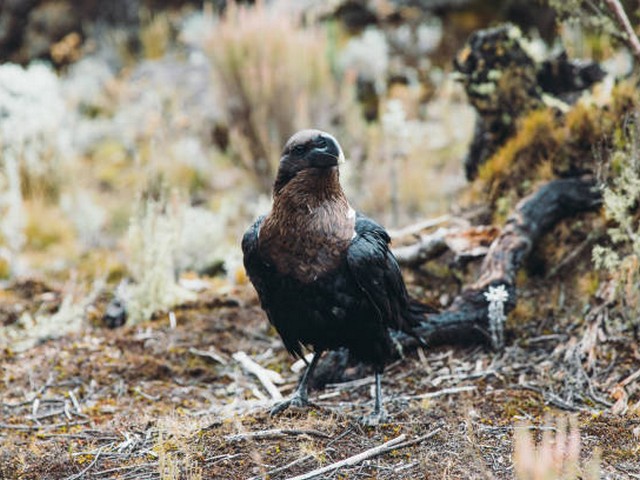Solo Kilimanjaro Trekking Vs Group Climbs: Choosing Your Perfect Adventure
Standing tall as Africa’s highest peak, Mount Kilimanjaro beckons adventurers from all walks of life. Whether you’re a seasoned mountaineer or a novice eager to conquer new heights, the decision between solo Kilimanjaro trekking and group climbs remains a pivotal one. At the Kilimanjaro Centre for Trekking and Ecotourism (KCTE), we pride ourselves on guiding trekkers like you through this majestic landscape, ensuring memorable, life-changing expeditions. In this post, we’ll explore the nuances of solo versus group climbing, helping you choose the path that best suits your spirit of adventure.
Why Choose Mount Kilimanjaro?
Before we delve into the specifics of solo and group trekking, let’s remind ourselves why Kilimanjaro is a beacon for climbers worldwide. Its ecological diversity, from lush rainforests to alpine deserts, coupled with the accessibility of its summit, Uhuru Peak, makes Kilimanjaro a unique and compelling climb. Each route offers distinct views and challenges, ensuring that every trekker’s experience is uniquely their own.
Solo Kilimanjaro Trekking: The Path Less Travelled
The Allure of Independence
Solo trekking on Kilimanjaro offers an intimate, introspective journey, allowing climbers to move at their own pace and engage deeply with their surroundings. This option suits those who seek solitude and personal challenge, as well as experienced climbers who prefer a tailored experience.
Customization and Flexibility
Choosing a solo trek means you can customize your journey, from selecting specific routes to deciding on each day’s trek duration. At KCTE, we offer bespoke solo treks that cater to your individual preferences, ensuring your journey is as unique as you are.
Considerations and Preparations
Solo trekking requires thorough preparation, both physically and mentally. While you won’t be entirely alone—our experienced guides and porters will be with you every step of the way—the sense of isolation can be both empowering and daunting.
Group Climbs: The Shared Journey
The Joy of Camaraderie
Group climbs foster a sense of camaraderie and collective achievement. Sharing the experience with others can provide motivational support and enhance the joy of reaching the summit together. Group climbs are perfect for those who enjoy social interactions and learning from fellow trekkers.
Cost-Effectiveness and Structure
Group climbs are generally more cost-effective, as you share the expenses of guides, porters, and logistics. Additionally, they are often structured with fixed departure dates and a planned itinerary, making it easier for trekkers who prefer a well-defined schedule.
Diversity of Experience
Climbing in a group introduces you to diverse perspectives and stories. This enriching exchange can deepen your understanding of different cultures and backgrounds, adding an enriching layer to your trekking experience.
Making the Right Choice
Consider Your Climbing Style
Think about what motivates you in an adventure—is it the quiet reflection of a solo journey, or the shared energy of a group experience? Your preference will guide your choice.
Assess Your Experience Level
While both solo and group treks are supported by KCTE’s expert teams, solo treks can be more demanding. Assess your level of experience and comfort in isolated environments.
Understand the Costs
Solo treks can be more costly due to the personalized service and flexibility. Group treks offer a more budget-friendly alternative with the added benefit of built-in companionship.
Why Trek with Kilimanjaro Centre for Trekking and Ecotourism (KCTE)?
At KCTE, we are committed to providing exceptional trekking experiences while promoting ecotourism and sustainability. Our expert guides, who are natives with deep respect and knowledge of the mountain, ensure your safety and enrich your journey with local insights. Whether you choose a solo adventure or a group climb, we are here to make your Kilimanjaro trek unforgettable.
Frequently Asked Questions
Can I switch from a solo trek to a group climb if I change my mind?
Absolutely! We understand that plans and preferences can change, and we are flexible in accommodating your needs. Contact us, and we’ll help you transition to the option that best suits you.
What is the best time of year to climb Kilimanjaro?
The best times to climb Kilimanjaro are during the dry seasons: from late June to October, and from late December to early March. These periods offer the most favorable weather conditions for trekking.
Are solo trekkers provided with a guide?
Yes, all solo trekkers are accompanied by a KCTE certified guide and necessary porters. Your safety and well-being are our top priorities.
How do I prepare for altitude sickness?
Both solo trekkers and group climbers should acclimatize properly. We recommend a gradual ascent and staying hydrated. Our guides are trained to assist with altitude sickness and ensure your health is monitored throughout your climb.
Conclusion: Your Mountain Awaits
Whether you choose the introspective path of a solo trekker or the shared stories of a group climb, Mount Kilimanjaro promises a journey of a lifetime. At Kilimanjaro Centre for Trekking and Ecotourism, we are dedicated to crafting treks that meet your personal aspirations and exceed your expectations. Ready to stand atop Africa? Book your Kilimanjaro climbing adventure with us today and step into a story that will echo throughout your life.
Embark on your journey with KCTE—where your adventure begins with every step you take.




